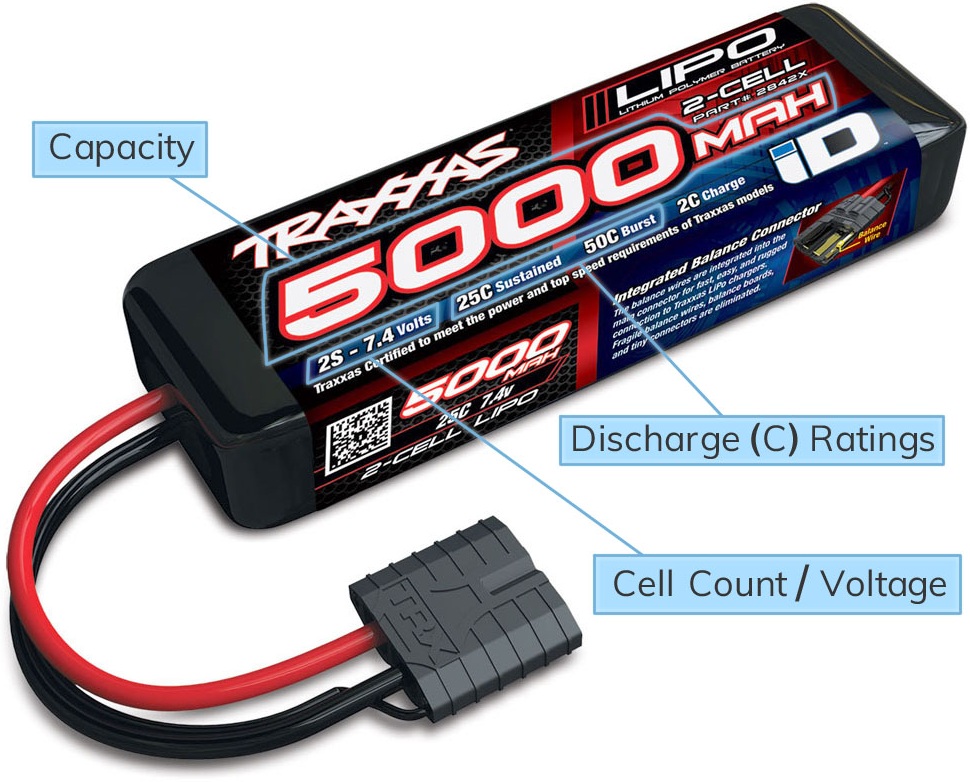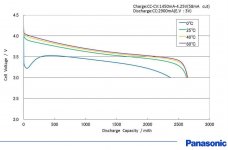This is a nice addition to FF6 but if one cell is bad or weak from my experience the voltage drop happens so fast in a blink of an eye we will not be able to see it. Its not going to tell us if one cell is bad or not. This will just give us a better understanding of when we should be landing for a safe flight which is excellent.
Welcome to our Community
Wanting to join the rest of our members? Feel free to sign up today.
Sign up
You are using an out of date browser. It may not display this or other websites correctly.
You should upgrade or use an alternative browser.
You should upgrade or use an alternative browser.
Solaris8x86 views on the Parrot Anafi crash's(5/Nov)
- Thread starter Jagerbomb52
- Start date
Fmaxii
Well-known member
You’re right Augustine, and it’ll be so better than this stupid % we have
Gipsz Jakab
Well-known member
Wwwwwaaaaaaaaoooooohhh!
Nice job!
AnafiPilot1
Well-known member
- Joined
- Aug 15, 2019
- Messages
- 500
- Reaction score
- 385
Available for download. Freeflight 6 mod app - Special Features
Fmaxii
Well-known member
It now has its own post in the sticky section.Available for download. Freeflight 6 mod app - Special Features
Freeflight 6 mod app - With Special Features
I have been working on modding FF6 with some of the extra (special) features they are offering for the US army and USA version of the Anafi. Since the 1st day of owning the Anafi - mapping has been an weak point in the App, the need for online maps and the fact that you cannot preload large...
Gipsz Jakab
Well-known member
It's very good this way, it's good to see the% display because the voltage is comparable to the% value. If that changes, you know the battery is aging and something is wrong.Since the "%" and mv value are linked together, we see one of them is enough which is no need to show both, and if there is a battery physical damage or worn out the display won't help any more.
AnafiPilot1
Well-known member
- Joined
- Aug 15, 2019
- Messages
- 500
- Reaction score
- 385
It's very good this way, it's good to see the% display because the voltage is comparable to the% value. If that changes, you know the battery is aging and something is wrong.
Yes exactly!
With both % and mV you can understand your batteries better - you can see the differences between them, and can know better when to replace.
I have 3 batteries and it is amazing how you can see the differences between them by looking at % and Voltage!!
AnafiPilot1
Well-known member
- Joined
- Aug 15, 2019
- Messages
- 500
- Reaction score
- 385
Since the "%" and mv value are linked together, we see one of them is enough which is no need to show both, and if there is a battery physical damage or worn out the display won't help any more.
No they are not linked. charge is very different to voltage.
Charge level is based on how much charge has gone in to the battery and how much has been drawn from it.
As the battery ages & changes - internal resistance goes up and capacity goes down. So there is no way of knowing charge just by measuring voltage, especially under load.
Gipsz Jakab
Well-known member
I would love to give it a try ... but I don't want to upgrade from the 6.6.3 firmware. Can you make us (there are others who have not updated) an FF6 6.6.2_FCC version with battery display?No they are not linked. charge is very different to voltage.
Charge level is based on how much charge has gone in to the battery and how much has been drawn from it.
As the battery ages & changes - internal resistance goes up and capacity goes down. So there is no way of knowing charge just by measuring voltage, especially under load.
zandoli
Well-known member
- Joined
- Jul 8, 2018
- Messages
- 157
- Reaction score
- 87
Parrot responds to Solaris8x86
Solaris8x86 replies
Since its release in 2018, we have developed 7 major updates for ANAFI in order to bring ever more functionality and stability to the drone; in particular with the improvement of the state of charge estimator (SOC) of the Smart Battery, as well as the addition of a minimum voltage threshold triggering an emergency landing if it is reached. In order to get the best possible flight experience, we emphasize the importance of updating our products before using them.
Contrary to what is indicated in this video, we assure that in no way Parrot introduced a deliberate bias in the SOC estimate in order to maximize the autonomy or any other performance of the product at the expense of the safety of the drone and the battery. The cell specifications are scrupulously respected in order to maximize the life of ANAFI batteries. Functions such as hibernation or automatic self-discharge have also been developed specifically for this purpose.
We observe that the SOC of the presented battery is abnormally and strongly shifted. For a 7V pack voltage, the SOC is 29% in the case presented, while it should be 2% in a nominal case, at which point the automatic landing would have been triggered. These data highlight a very significant degradation of the presented battery.
We remind that batteries are very delicate components that must be carefully maintained in order to optimize their lifespan, as we indicate in our guide to best practices: https://support.parrot.com/global/support/products/anafi/how-maintain-battery-anafi.
Finally, we would like to strongly draw the attention of our users to the questionable purpose of this video. This aims to dramatize and falsify reality, using special auditory and visual effects (such as adding smoke from the battery), in order to unfairly promote a battery produced by a third party. We strongly condemn this practice and remind that any damage related to the modification of our battery or the use of an unofficial battery will not be covered by our warranty.
SAFETY WARNING: any handling of an open battery or cells creates very dangerous risks of fire or explosion in the event of a short circuit. The Parrot team
Solaris8x86 replies
Are you guys in headquarter very flame up now? Well, let me thanks for your coming first as Parrot official is very seldom to show up on other youtube channel. I'm delighted. Let's get this straight. This video is all by science. And I would like to highlight the fact by points. Hope you guys in HQ can rethink what's happening and face to the reality. When I said reality, means science and results:
1. This drone has been keep crashing and being complaint for a long time since 2018 in all major parrot drone forums and facebook groups by most of your customers. And you guys in Paris keep hiding in the dark for years from your customers by ignoring their enquires, refusing to replace them the drone which is now unleashed as a flaw of your design. Is a correct responsbility to your customer and the aero-safety for the others? The purpose of this video is a help for your company to clean up your mess of your design flaw on both the application of lithium polymer battery which is a hardware error and the flaw of the fuel gauge itself which is your program error. I did you a favour actually by warning them how to take care the battery for more healthy and more professionally. And the advise in this video is just to tell them to stick with the common best practise of the RC world who everyone would just land on 3.7v to keep the battery health in optimal performance. The whole world RC players are doing this. Oh, your company is not using lithum polymer or your battery is somekind of fusion powered? **** it, you treat me as bad guy? Are you kidding? How old are you?
2. I don't care your SOC thing that you claimed it has problem on that particular battery. But the fact is, in the video. There're 5 batteries. 4 of them are having the same problem. They just dropped at from 8% - 23% differently. I just demostrated one of them only. And when using the same "SOC" with the new cells. The problem is solved. So you are actually telling me 4 of 5 batteries are defected? Well, then your product has a 80% failure rate than. I think you really need to take a look to your QC team. If they are too lazy. Just fire them. You need to go back to the right track of thinking logic.
3. The battery gets smoked. Just an effect. Is there any of your official video without any effects? I don't think so. So what's the problem when other people is using the effect, fair speaking? If I like that. I can even to make it explodes or on fire. You are just double standard and you are not a logical person.
4. I would like to highlight about your SOC part. If your smart battery controller could kill the cells within just 24 cycles. You know, this number is quite remarkable. Unbelieveablely short-live. In the video, when the new cells are attached. The SOC has returned to normal immediately...? Because it then could land at 2% with the new cells. Therefore, the root cause is on the smart battery controller which controls or calculates the SOC part? So SOC is flaw? Based on the result, only cells are replaced. Nothing more. And you still think your smart battery is safe and reliable?
5. The result suggests that after the old damaged cells are replaced and problem is solved even using back the same battery hull and its smart battery controller board. Which should be a good thing for everyone because customers will no longer crash at an unsual percentage caused by the flaw of your smart battery controller board. I saved them from the crash by giving the advise. Helping to improve aero safety. Am I wrong?
6. If the same SOC can have different results on different cells (actually on your cell failed. On my cell works out... which is ironic.. LOL). Please elaborate this logic... if I am not the one who should claim the victory. Who else can? You are the failing side....
7. Your customer already won't care the warranty as you company even doesn't provide a valid warranty to most of them. Such as stalling the claim procedure up to months? No email reply to them in most cases, no repair office in their countries, or most that we heard of is your team always decline them the warranty due to your freeflight cannot log the crash flight in most cases. So they ended up with nothing and they come to me. I knew your products before you joined to your ******* company. So please pay some respect to your Mod creator who is helping you for your sinking business. Learn some manner. Or it will sink sooner.
Last edited:
zandoli
Well-known member
- Joined
- Jul 8, 2018
- Messages
- 157
- Reaction score
- 87
I am quite happy that Parrot is alerted, though they refuse to accept guilt.
So many have lost their drones without getting replacements.
So many have lost their drones without getting replacements.
BRC
Well-known member
Thank you for sharing - I rather enjoyed that from Solaris8x86I am quite happy that Parrot is alerted, though they refuse to accept guilt.
So many have lost their drones without getting replacements.
I guess there is a new update coming soon.
Correcting the wrong readings in the battery/Anafi/FF6 train!
Just: If it is really a "6 Volt" motherboard shut off problem, the bird becomes a 15 minutes max flight time bird
Correcting the wrong readings in the battery/Anafi/FF6 train!
Just: If it is really a "6 Volt" motherboard shut off problem, the bird becomes a 15 minutes max flight time bird
Gipsz Jakab
Well-known member
An interesting moment: this link gives a 404 error.
The parrot was turned off. This link was sent by Parrot to solaris8x86 in the conversation above:
Here is a general description of what you need to know about the LIPo battery:

 rogershobbycenter.com
rogershobbycenter.com
The parrot was turned off. This link was sent by Parrot to solaris8x86 in the conversation above:
Here is a general description of what you need to know about the LIPo battery:

An Expert's Guide to Understanding LiPo Batteries — Roger's Hobby Center
Get all the critical information on LiPo batteries in one place from a 17-year veteran of the hobby industry with easy to understand explanations.
Last edited:
MustangPhil
Well-known member
The actual Parrot web link to the battery maintenance is here :
 support.parrot.com
support.parrot.com
Parrot Support Center | Parrot ANAFI drone FAQ
Need help? Troubleshooting, support FAQ and user guides for your ANAFI series drone: ANAFI, ANAFI Extended, ANAFI FPV, ANAFI Work
AnafiPilot1
Well-known member
- Joined
- Aug 15, 2019
- Messages
- 500
- Reaction score
- 385
I guess there is a new update coming soon.
Correcting the wrong readings in the battery/Anafi/FF6 train!
Just: If it is really a "6 Volt" motherboard shut off problem, the bird becomes a 15 minutes max flight time bird
solaris8x86 started with faulty batteries, with working batteries runtime for the drone is correct. What we are concerned with here is what the drone does when it clearly has a faulty battery.
Parrots response confirms one thing I thought correctly, in the thread where the persons drone made an critical battery autoland at 83%, as I suspected it must have been triggered by voltage brown-out.
Clearly they are aware of these problems judging by the fact they 'introduced' minimum voltage threshold - which must of been in response to drones falling out of the sky randomly.
However, it is also clear they never bothered analysing and determining exactly what was causing it - as their minimum voltage threshold checks should have caught the fact something is wrong with the battery if its voltage was down below 7V at 30%. I tested my batteries and 1% level is around 6.8V to 6.9V, which design wise is correct.
I checked with Panasonic who make the batteries in Tesla and for many other industrial users of LiPo's, and they state operating range as 4.2V to 3.0V per cell, with no impact on life, and most battery packs define 0% at 3.4V as the voltage from that point tails of quickly to 3V.
So I do not see a problem with the Anafi battery packs - the problem is how the Anafi handles situations where the battery is bad or going faulty. Failure to handle this results in a broken drone - so they can (must) do better.


I think I don't care how much needed to spend for a new battery, what I do care is the drone crashed because of the battery failure (bad quality) or worn out, for example if it is happened over the water, then we lost everything including battery, the FF6 should tell us the exact "%" we have to land the drone on different state of batteries (new or used), then the battery landing "%" will be also different between new and the used ones, and same to the flying time, such as the new battery has 25 minutes and the used one will be less, then you need a new battery, the correct and precise battery "%" is essential to avoid the crash.
Gipsz Jakab
Well-known member
I have said exactly the same thing from the beginning.I think I don't care how much needed to spend for a new battery, what I do care is the drone crashed because of the battery failure (bad quality) or worn out, for example if it is happened over the water, then we lost everything including battery, the FF6 should tell us the exact "%" we have to land the drone on different state of batteries (new or used), then the battery landing "%" will be also different between new and the used ones, and same to the flying time, such as the new battery has 25 minutes and the used one will be less, then you need a new battery, the correct and precise battery "%" is essential to avoid the crash.
This is exactly how DJI machines work. They also display the voltage of each cell to 2 decimal places and also graphically. When the set threshold% is reached (can be changed to some extent) it starts the failsafe RTH and comes home safely, regardless of the health of the battery.
Similar threads
- Replies
- 8
- Views
- 1K
- Replies
- 4
- Views
- 921
- Replies
- 3
- Views
- 735


